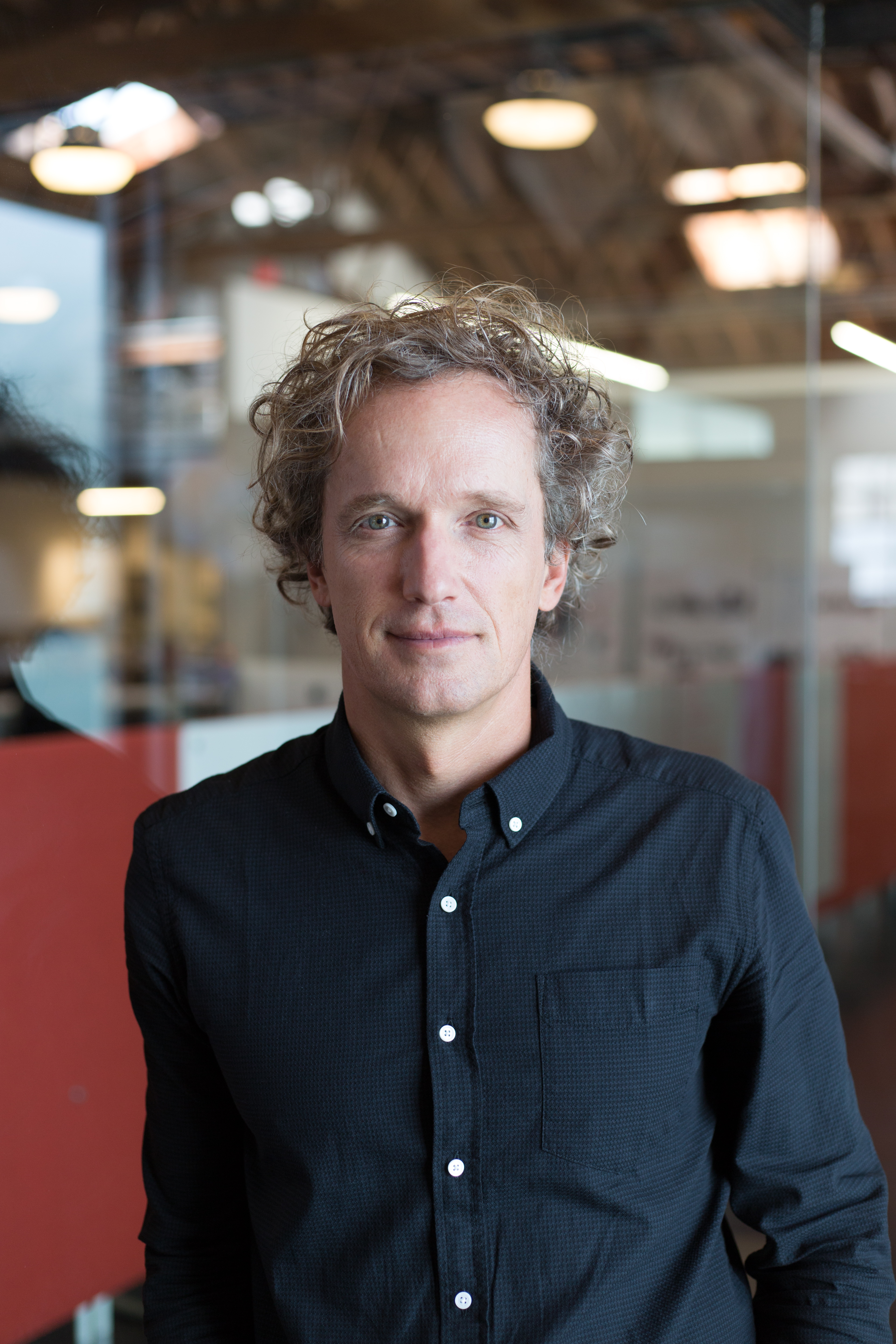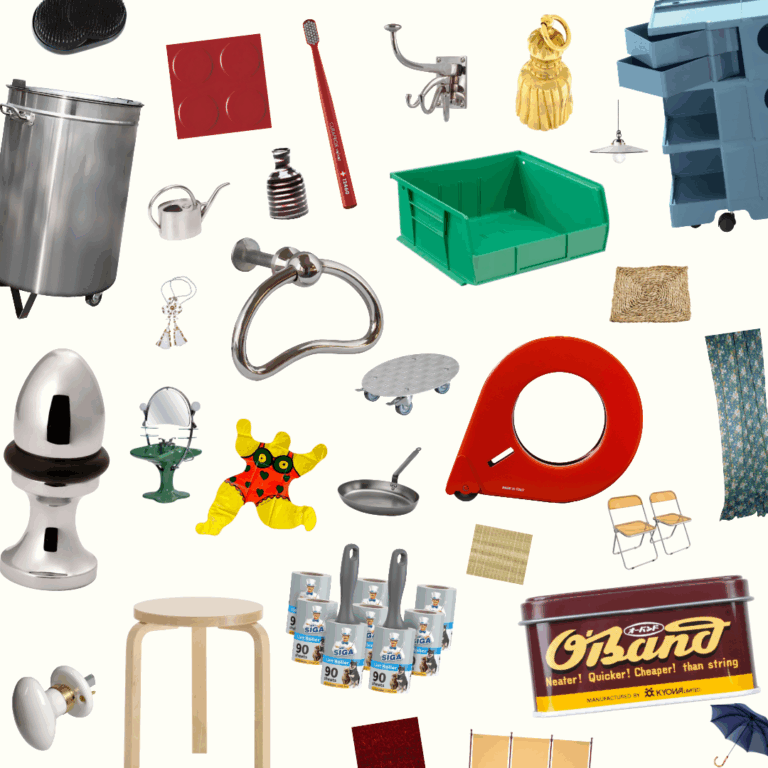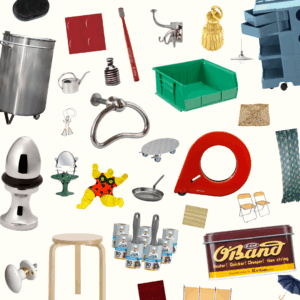
Yves Béhar, the founder and principal designer of Fuseproject, shares Silicon Valley’s utopian vision of technology as a liberator from the mundane and enabler of greater communication and control. He also concedes that dystopian trends are in our midst. “When reality becomes the uninteresting part of our lives and tech is all-engrossing, it can separate us from each other,” says Béhar, who is surrounded by objects of his own design.
He sits in one of his comfy Sayl swivel chairs with a gray-blue UP band on one wrist and a Movado Edge watch with copper trim on the other. Few things dismay the athletic father of four more than being in a restaurant next to a family whose eyes are all glued to their devices. A desire to minimize such distractions informs The Frame, an ultra high-definition television designed by Béhar for Samsung, launching this month.
“Technology has invaded our personal lives in ways that are disruptive,” explains Béhar, as he pushes an unruly gray-blond curl off his forehead. “In the home, people want tech to be discreet, non-interruptive, ambient.” Béhar sees regular television screens as “black voids that have a constant need to be validated.” The Frame, by contrast, ceases to look like a television when it’s turned off, displaying an artwork chosen by the homeowner from among 100 images by 38 artists. Fitted with sensors, which automatically alter the display’s brightness to suit the light in the room, the images avoid appearing like illuminated bus stop ads and approximate the look of works on paper.
Béhar’s work is part of a general trend toward invisible technology. “The TV used to be a showy, shiny status symbol,” explains Béhar. “The Frame has the most advanced display, but we are letting it disappear. It’s tech with humility.” City folk and apartment dwellers (who don’t have the benefit of a separate TV room) can dine, read or entertain without being lorded over by an imperious, deathly rectangle. Typically for Béhar, the innovation in his design comes from identifying a near universal problem–in this case, the constraints of domestic real estate–and coming up with graceful design solutions rather than flashy engineering breakthroughs.
Nicholas Negroponte, the founder of the MIT Media Lab, credits Béhar with “bringing classic industrial design into the digital age” and argues that “his approach is being cloned,” such that his impact is every bit as much by example of his process as by any specific product. You can see this in the general trend of objects having more intelligence and personality.” Béhar worked on Negroponte’s “One Laptop Per Child” project, designing a cheap, kid-friendly computer aimed at transforming education in the developing world.
Béhar has been responsible for many “firsts” in the “internet of things” where micro-computers are implanted in everyday objects, enabling them to communicate over wireless networks. His multi-colored, textured metal Jamboxes, for example, were the first Bluetooth speakers. Launched in 2010, they preceded a multibillion-dollar wireless speaker market. The UP band, the first fitness tracker to include both activities and sleep logs, spearheaded the “wearable tech” market. While the SNOO smart sleeper is the first robot-nanny-bassinet, which soothes babies to sleep. Finally, the recently launched Superflex is among the first examples of “powered apparel;” it’s a robotic exoskeleton that helps the elderly and infirm to sit and stand on their own.
This cluster of designs is a “very telling self-portrait,” according to Jennifer Dunlop Fletcher, senior curator of Architecture and Design at San Francisco’s Museum of Modern Art. “As a designer, Yves is able to identify a need based on his own lifestyle, and then passionately pursue it until it is realized. He cares deeply about environmental issues, work-family balance, and responsive iteration.”
Born in Switzerland, a country whose most visible consumer export is the watch (for centuries, the only well-worn technology), Béhar moved to Pasadena in 1990 at the age of 23 to attend ArtCenter College of Design. Many see his sensibility as typically Swiss in having the minimalist refinement associated with the likes of Helvetica and Mondaine. Indeed, Behar identifies with the “carefully crafted resolutions,” as he put it, through which Swiss design attempts to “deliver ideas.” But having spent the last 27 years on the West Coast, Behar is perhaps more accurately viewed as quintessentially Californian. He is open to new forms, ambitious for a better world and keen on “the pioneering spirit.”
Labeled a “venture designer,” Béhar is one of a new breed. He often forms long-term partnerships with startups in exchange for equity. With Jawbone and August Smart Locks, for example, he was a partner involved in the earliest stages of development. As a result, design is essential to these products rather than something pretty slapped on the outside.
Béhar has also succeeded with old-school objects where industrial designers have traditionally proven their worth, such as the chair. His iconic Sayl office chair, made for Herman Miller, a 100-year-old furniture company known for its collaborations with great modernists such as Charles and Ray Eames, has a flexible plastic webbed back.
Although Béhar does not have a “style” per se, he often deploys attractive abstract patterns and makes objects that feel more fully three-dimensional than their competition. “The patterns are a series of experiments that come from the belief that we should make the most of materials,” explains Behar. “The pattern can become recognizable–an identity element–but it starts out as an exercise in functionality and efficiency.” Béhar refuses to play favorites when it comes to materials, working with the most advanced and the most ancient, while deploying as many methods–casting, molding, injecting, extruding, sewing, etc.–as possible. “Plastic can be made to look cheap and disposable, or rich and valuable,” says Béhar, who prefers the latter because it is a better way of “honoring” the material. “That’s the real beauty of design,” he affirms, “The language of making from manufacturing to craft is endless.”










 in your life?
in your life?

